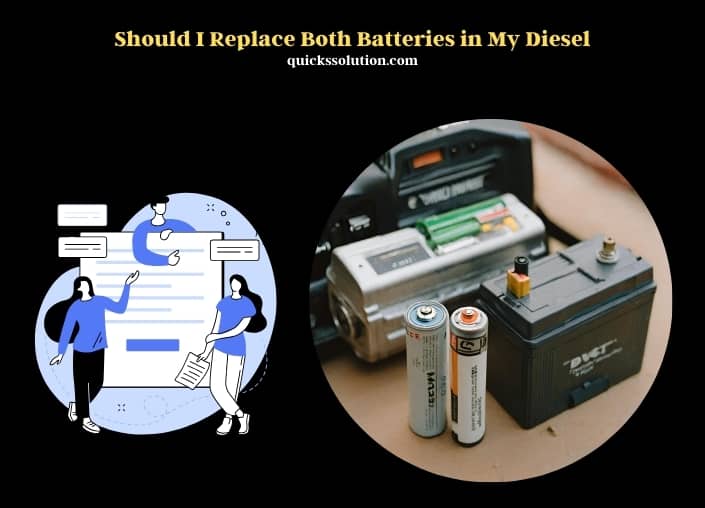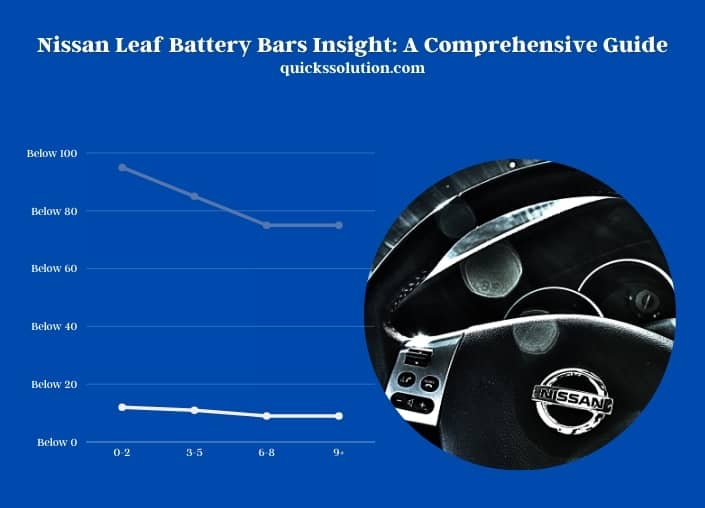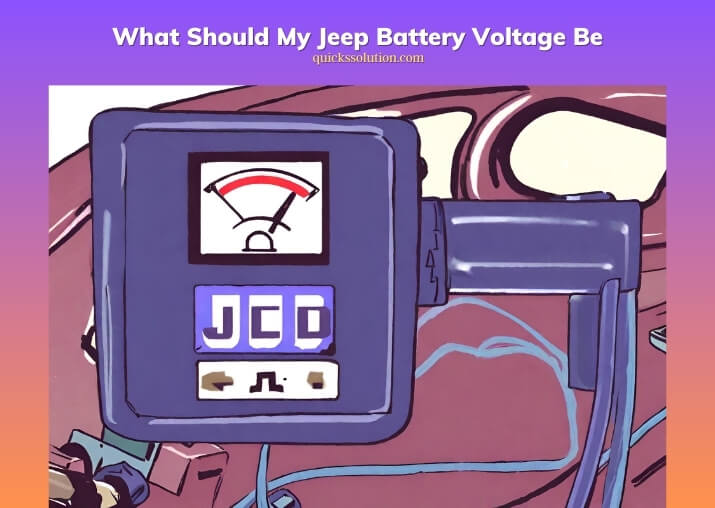Published on: June 27, 2023
Written by Amlan Roy / Fact-checked by Hashim Manna
A car battery holds a fair amount of water, enough to keep it running properly for a long time. However, if you live in an area with hot weather or regularly drive in stop-and-go traffic, your battery may not last as long. Check the level of water in your battery every few months to make sure it’s topped off.
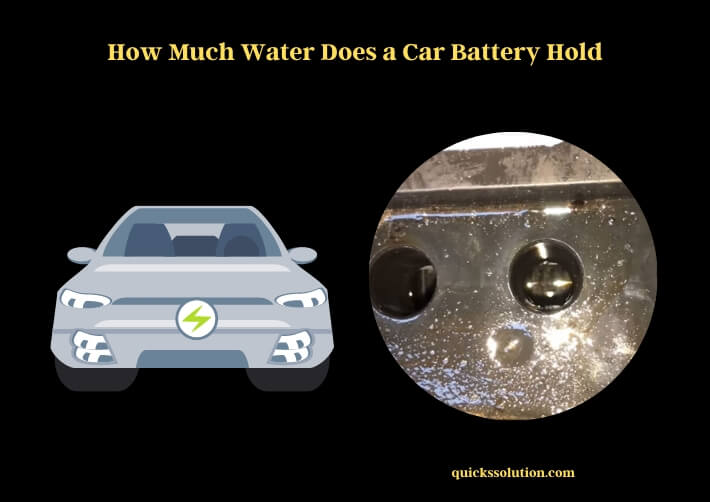
Our car battery is an essential part of our vehicle, and it needs to be properly maintained in order to keep our car running smoothly. One important aspect of caring for our battery is making sure it has enough water. But how much water does a car battery hold?
The average 12-volt car battery holds about 3 gallons of water. That may not seem like a lot, but it’s actually enough to keep our battery healthy and functioning properly. Of course, if we live in an area with very hot weather, we may need to check our battery’s water level more frequently and top it off as needed.
It’s easy to check the water level in our car battery – just remove the caps from the cells and take a look inside. If the water level is below the lead plates, then it’s time to add some more. We can use distilled water or deionized water, which can be found at most auto parts stores.
Never use tap water, as it can contain minerals that will damage our battery. Adding water to our car battery is a simple task that only takes a few minutes, but it’s an important part of keeping our vehicle on the road. So next time we’re checking under the hood, make sure to take a peek at the Battery Water Level and top off as needed!
How To Check & Properly Fill Water Levels In A Car Battery? (Andy’s Garage: Episode – 192)
How Often Should I Add Water to My Car Battery?
It’s important to keep our car battery hydrated. But how often should we add water to it? Here’s what weneed to know.
Our car battery is made up of cells that contain lead and lead dioxide electrodes, separated by an electrolyte solution. The electrolyte is made up of water and sulfuric acid. When Our battery is charged, the sulfuric acid molecules are broken down into water and sulfate ions.
When our battery is discharged, the reverse happens – the water molecules are broken down into hydrogen and oxygen gas. That’s why it’s important to top off our battery with distilled water every few months. This will help keep the electrolyte solution at the correct level so that our battery can continue to charge and discharge correctly.
If you live in a hot climate, or if you do a lot of short trips where your engine doesn’t get up to operating temperature, you may need to check and fill your battery more often. Use a hydrometer or voltmeter to test your battery regularly, and add distilled water as needed.
What Happens If Battery Water is Low?
If the battery water is low, it means that the electrolyte level is also low. This can happen if the battery is not used for a long time, or if it has been overcharged. When this happens, the chemical reaction that normally takes place in the battery cannot occur, and the battery will not work properly.
If I try to use a battery with low water levels, it may damage the battery or cause it to catch fire.
Can You Overfill a Car Battery With Water?
Yes, I can overfill a car battery with water. When water is added to the battery, it reacts with the lead and creates lead oxide, which reduces the capacity of the battery. Too much water can also cause the battery to leak.
Will a Battery Charge With No Water?
No, a battery will not charge with no water. Water is an essential component of the chemical reaction that takes place within a battery, and without it, the reaction cannot occur. The water in a battery plays two roles: it acts as a solvent for the electrolyte chemicals and it helps to cool the battery as it charges.
If there is no water present, the battery will overheat and be damaged.
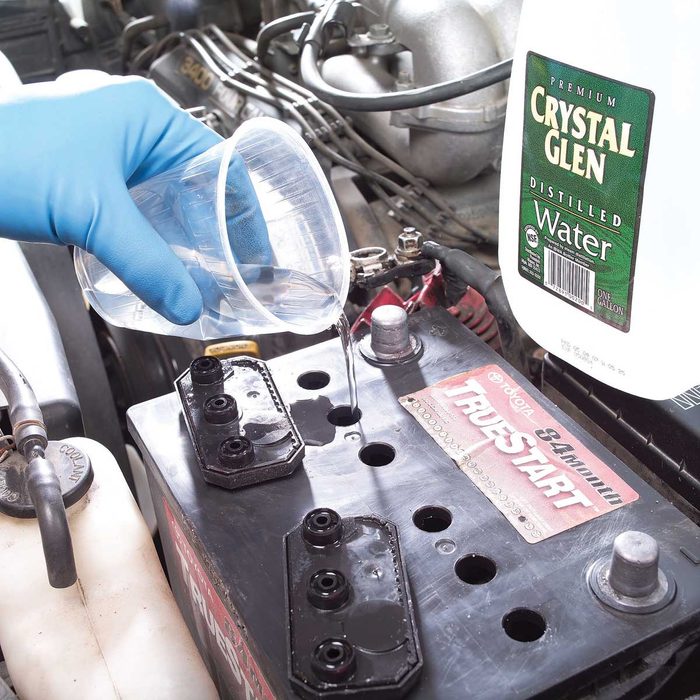
How Much Water Should Be in a 12-Volt Battery?
Water is essential for a 12-volt battery. The water level should be checked regularly, and the battery should be topped off as needed. There are two ways to check the water level in a 12-volt battery: by looking at the side of the battery or by removing the caps.
If we look at the side of the battery, there are usually three small holes called vents. These vents allow gases to escape from inside the battery while it’s charging. One of these vents also has a small plastic tube called a hydrometer that protrudes from it.
The hydrometer is used to measure the specific gravity of the electrolyte, which tells us how much acid is dissolved in the water and how well charged the battery is. To remove the caps and check the water level, first make sure that the batteries are turned off and discharge any static electricity from our body by touching something metal before we begin. Once we’ve done that, unscrew each cap (there will be one on each cell) and check to see if the water level is above the lead plates inside. Read more: Do AirPods Case Lose Battery When Not in Use?
If it isn’t, add distilled water until it reaches just below where those lead plates start. It’s important not to overfill because too much water can dilute the electrolyte and cause problems with charging.
How Do You Know When Your Car Battery Needs Water?
If my car battery is more than three years old, it’s a good idea to check it regularly to make sure it has enough water. Here are four signs that my car battery needs water:
1. The engine cranks slowly when I try to start the car.
2. The headlights are dimmer than usual.
3. There’s a clicking sound when I turn on the ignition.
4. The battery leaks fluid or produces sparks.
How to Refill Battery Water for Car?
Have we ever noticed the battery water level in our car getting low and thought to ourself, “we should probably refill that”? Well, here’s how! First, we’ll need to purchase some distilled water.
We can find this at most grocery stores. Do not use tap water, as it contains minerals that can damage our battery. Next, locate the battery in our car.
It is usually located under the hood. Once we’ve found it, remove the cap(s) from the top of the battery. Be careful not to touch any of the exposed metal, as this can cause a spark and lead to an explosion.
Now slowly pour the distilled water into each cell of the battery until it reaches the fill line. Replace the cap(s) and you’re done! It’s important to check our battery’s water level regularly and refill as needed.
This will help prolong its life and keep it working properly.
Fluid Level in Battery is Low What Should You Top It Up With
If the fluid level in my battery is low, we should top it up with distilled water. This will help to prevent corrosion and keep my battery working properly.
Car Battery Water
If our car battery is running low on water, it’s important to top it off as soon as possible. Water helps keep the battery cool and prevents corrosion. To check the level of water in our battery, remove the caps and take a look inside.
https://www.indiamart.com/proddetail/maxicare-battery-water-21206284473.html
If the level is low, carefully add distilled water until it reaches the fill line. Be careful not to overfill – too much water can cause problems as well. If our battery doesn’t seem to be holding a charge or is otherwise acting up, it may be time for a new one.
Batteries only last for so long – typically around 3-5 years – so if ours is getting old, it may be time for an upgrade.
Car Battery Water Level Indicator
It’s important to check the water level in our car battery on a regular basis. A simple way to do this is to use a battery water level indicator. These devices are usually made of clear plastic and have markings that show the minimum and maximum safe levels for battery water.
To use one, simply remove the battery cap and place the indicator over the opening. If the water level is below the minimum line, it’s time to add some distilled water. Be sure not to overfill, as this can lead to problems down the road.

Exide Car Battery Water Level Indicator
It’s important to keep an eye on the water level in our car battery. Exide has a helpful indicator that makes it easy to see when it’s time to add water. Here’s what we need to know about this handy tool.
The water level indicator is located on the side of the battery, near the top. It has a clear plastic cover so we can easily see the float inside. When the float is at or above the “Full” line, there’s no need to add water.
If it drops below that line, it’s time to add distilled water until it reaches the “Full” line again. Checking and adding water to our battery is quick and easy, and it will help extend the life of our battery. So be sure to keep an eye on that indicator and stay topped off!
Car Battery Electrolyte
A car battery is an electrical device that provides power to a vehicle. It has two main components: the electrolyte and the lead plates. The electrolyte is a solution of sulfuric acid and water that creates an electric current when it comes into contact with the lead plates.
This electric current is used to start the engine and run the accessories. The lead plates are made of lead and lead dioxide, which act as electrodes in the chemical reaction that produces electricity.
The electrolyte level in a car battery should be checked periodically to make sure it is full.
If it is low, add distilled water to bring it up to the proper level. Do not overfill, as this can damage the battery.
Conclusion
A car battery holds a lot of water – enough to keep our car running for a long time. But how much water does it actually hold? And how often should you check it?
Sometimes car battery getting hot and need to cool it when we are drive long distance. If we do not give watter then the battery can damage or does not work properly. But over water can be the case of leakage and damage battery.
So, give the right amount of water not more not less just what it require.
Read more:

